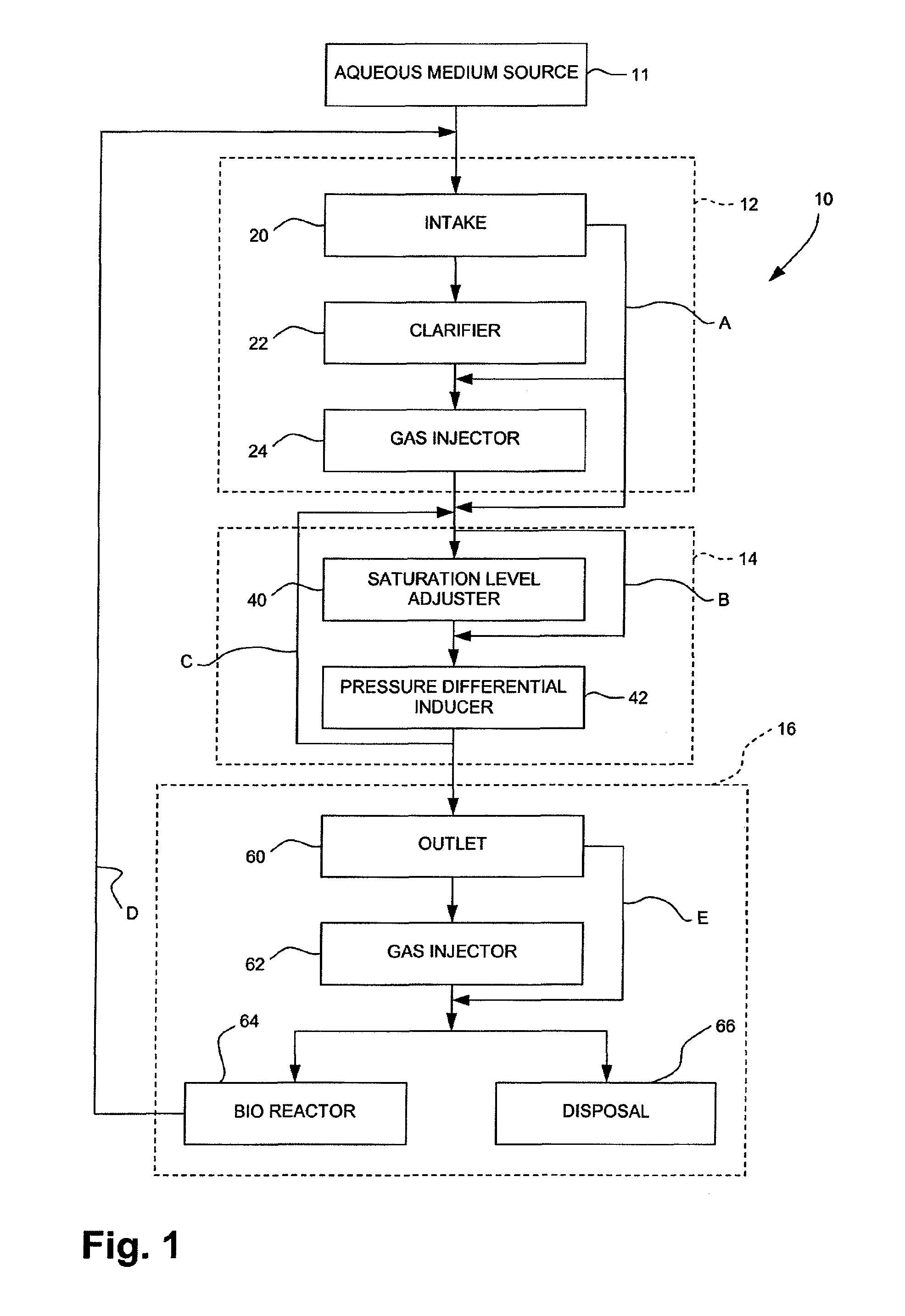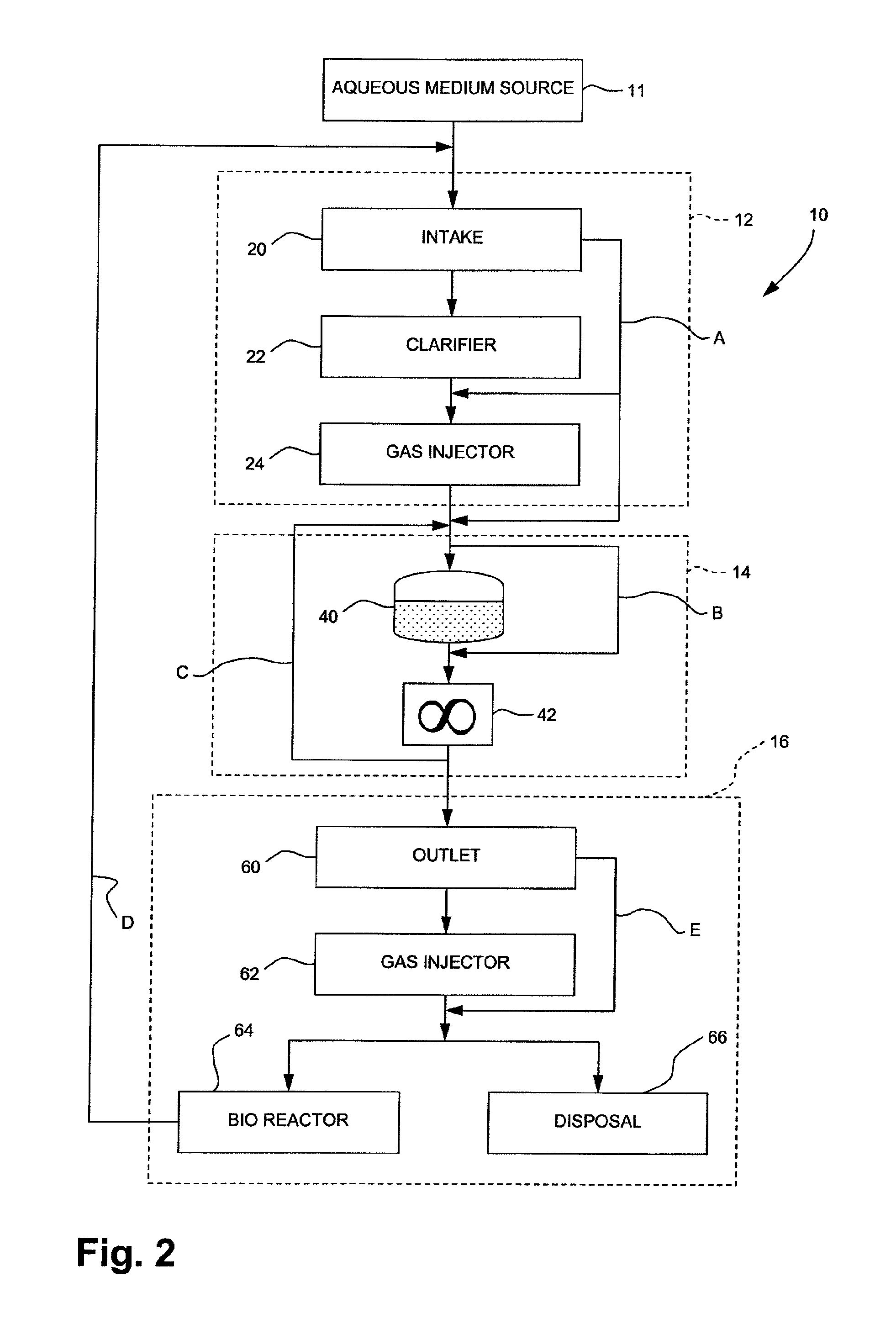Apparatus and method for the non-chemical stabilization of bio-solids
a biosolids and apparatus technology, applied in the direction of filtration separation, multi-stage water/sewage treatment, separation process, etc., can solve the problems of waste sludge, and high cost of microbial sludge solids extraction and disposal
- Summary
- Abstract
- Description
- Claims
- Application Information
AI Technical Summary
Benefits of technology
Problems solved by technology
Method used
Image
Examples
example 1
[0087]As illustration of one embodiment, in operation, water, wastewater and / or sludge that are near or above gas saturation is entered into a multistage submersible centrifugal pump at about 3450 RPM. The resulting treated aqueous medium is directed into a piping system to be recycled to a bio-reactor or disposed of, or directed to another centrifugal pump for further treatment, or the medium is directed to a further treatment operation as required.
example 2
[0088]The sludge that was entered into a compression tank with prior gas addition through the gas injector 24 that is a venturi (resulting in near or above gas saturation). The tank 40 and the content were pressurized to 5 atm over a period of 172 seconds. Once the desired internal pressure was obtained, the tank was allowed to decompress substantially instantly. The pressurization and depressurization cycle is repeated a second time. The resulting treated sludge is then directed into a piping system to a further treatment operation, namely the pressure differential inducer 42.
[0089]The resulting treated sludge obtained from the previous step was entered into a multistage submersible centrifugal pump (40) having 6 impellers and operating at 3450 RPM.
[0090]The resulting treated sludge is directed into the outlet section 16 to be recycled to the bio-reactor 64 or disposed of 66, or directed to another centrifugal pump using line C for further treatment, or the medium is directed to a ...
PUM
| Property | Measurement | Unit |
|---|---|---|
| velocities | aaaaa | aaaaa |
| pressure | aaaaa | aaaaa |
| force | aaaaa | aaaaa |
Abstract
Description
Claims
Application Information
 Login to View More
Login to View More - Generate Ideas
- Intellectual Property
- Life Sciences
- Materials
- Tech Scout
- Unparalleled Data Quality
- Higher Quality Content
- 60% Fewer Hallucinations
Browse by: Latest US Patents, China's latest patents, Technical Efficacy Thesaurus, Application Domain, Technology Topic, Popular Technical Reports.
© 2025 PatSnap. All rights reserved.Legal|Privacy policy|Modern Slavery Act Transparency Statement|Sitemap|About US| Contact US: help@patsnap.com



